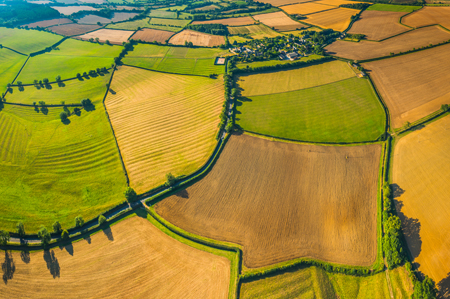Trump Tariff Payments Could Triple Farm Subsidies This Year
Category: Trade

(Agriculture.com) – When Congress passed the 2018 farm policy law, analysts estimated farm subsidies would cost an average $6.1 billion a year. The Trump tariff payments, ordered by the White House to mitigate the impact of the trade war, could triple the total for expenditures to farmers this year.
The administration seems certain to spend the $16 billion allotted for agricultural aid for this year, including $14.5 billion in cash in three tranches for farmers and ranchers, despite caveats that payments would stop if China-U.S. trade war was resolved. Nearly three dozen commodities are eligible for assistance this year, compared with nine in 2018.
“We’re not ready to make a deal,” said President Trump on Monday in Tokyo. During a news conference with Japanese Prime Minister Shinzo Abe, the president intimated he would levy more tariffs on China and also “I think we will have a deal with China sometime into the future.” In the interim, “The American farmer…they’re with me 100 percent.”
Early this month, the CBO estimated $17.2 billon would be spent this fiscal year on traditional farm supports plus Market Facilitation Program payments, the official name for the Trump payments. Some $9.6 billion would be spent on trade payments, said the CBO. Its figures were issued three weeks ahead of Trump’s announcement of the new round of aid last week. Agriculture Secretary Sonny Perdue said payments would begin in late July or early August, with additional installments slated for November and early January. The fiscal year ends on September 30, so the first tranche of payments would count toward fiscal 2019 totals.
“Our farmers work hard, are the most productive in the world, and we aim to match their enthusiasm and patriotism as we support them,” said Perdue.
There has been relatively little discussion or objection to the Trump payments. Lawmakers from both major parties in Congress have good cause to support trade-war mitigation for agriculture even if some wish aid was spread more widely. Farmers voted in landslide proportions for Trump in 2016 and generally are sticking with him politically. Farm groups appreciate the assistance while urging removal of the tariffs that have stunted ag exports, a key source of revenue for crop and livestock producers.
To pay for the ag aid, the administration took money from “USDA’s bank,” the Commodity Credit Corp, created in the Depression era with broad authority “to stabilize, support, and protect farm income and prices.” Eventually, Congress will have to replenish CCC funding but there were no legislative barriers to using it.
During a broadcast interview, Perdue said there would be a payment limit on this year’s trade payments and there would be an income limit for eligibility “but there again it will be somewhat different. Not necessarily what people have been used to.” Usually, there is a $125,000 per person limit on USDA payments, and people with an adjusted gross income above $900,000 a year are not eligible for payments.
A straw poll by Farm Journal found 45% of respondents approved of the new Trump payment plan, 19% were opposed, and 36% said they were undecided. Some 930 growers took part in the online poll.
For this year’s payments, the USDA said it would calculate trade losses for each county and divide the aid money accordingly, with all farmers in a county paid at the same rate per acre planted to eligible crops. Payment rates will vary county to county, as does the mix of crops.

